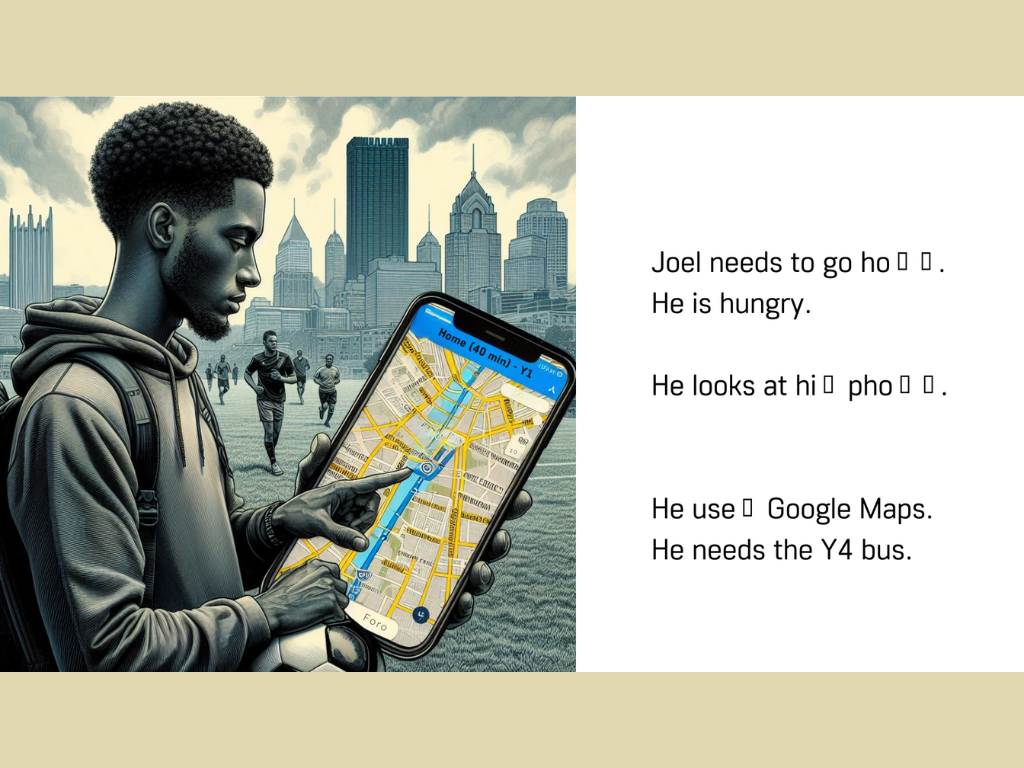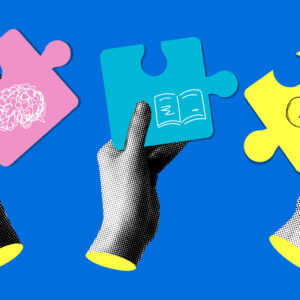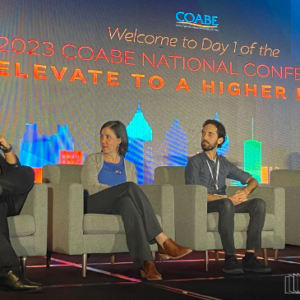
By Shawn Chattin
Using AI to Keep Your ELL Program’s Content Ready, Relevant, and Sustainable
Literacy Pittsburgh’s guiding words are: Ready, Relevant, and Sustainable. As a staff member, I think of these words when creating pedagogical content for my adult English Language Learners (ELLs). With generative artificial intelligence (GenAI) tools, I can bring my content closer to those three goals than ever before.
Ready
Ready content is always ready for the learner to use. The content should not need an update when it needs to be consumed.
Adult learners live very much in the present and desire content that can address their ever changing priorities. As instructors, satisfying this desire can be intimidating because of the simplest of problems: time.
While time will always be a factor, GenAI saves so much time on quality content creation that ELL programs should reevaluate their own potential for being creator hubs. The timeliest, readiest content possible for an English learner so often comes from the local area they live in, especially when new to the area.
GenAI offers programs the chance to transform information about social services, employment opportunities, or local news into widely accepted ELL activities such as cloze exercises, jigsaws, information gaps, structured debates, graded readers, and so on.
Here is an example of a beginner-level graded reader focused on how to use the new Pittsburgh public transportation app. I created it using ChatGPT-4 for editing, Dall-E 3 for image generation, and Canva for design. This content is ready to use for now, but someday the bus lines and the process of buying a ticket may change. When it does, ELL programs can leverage GenAI tools to efficiently update.
Relevant
Relevant content relates to the learners beyond their general wish to learn English.
Krashen and Terrell’s Natural Approach to language learning and Judy Willis’s Powerful Classroom Strategies From Neuroscience Research both emphasize the importance of content being relevant to a learner.
Here are 6 relevancies I have identified as valuable to ELLs:
- Occupation (nurse, construction worker, engineer)
- Interest (academic, artistic, recreational)
- Age (young professionals, middle-aged mothers, pensioners)
- Economic status
- Culture (country, first language, religion)
- Current location (state, city, neighborhood)
While you can use GenAI to facilitate content creation in all these relevancies, here are three reasons why I find current location particularly intriguing:
- For many learners, especially recent refugees and asylum-seekers, becoming comfortable with their current location is the relevancy that most meets their immediate needs.
- Our community-based classes are so diverse that often the only common relevancy is current location.
- Current location content neatly complements all other relevancies (stacking relevancies further adds to content value).
With so much opportunity to provide value through the current location relevancy, the major hurdle is finding the people to both procure the source material and create the usable content itself. To address this challenge, not only staff, but also volunteers and even the learners themselves need to be included in the process.
Sustainable
The key to making ready and relevant content sustainable is based on two factors:
- Access to ready and relevant source material
- Ability to turn source material into pedagogical content in a timely fashion
Even though the purest source material would come from the local area, sometimes source material from other organizations can be adapted to suit your learner. For Joel’s Bus Trip, I used Literacy Minnesota’s The Right Bus as a foundation, adapting it to fit both Pittsburgh and 2024. This would not have been possible had Literacy Minnesota not made their Story Bank an open educational resource (OER) found on CrowdEd Learning. OER will ensure there is always access to ready, relevant, and easily adaptable content that can be used as source material.
Developing roles within an organization to refine source material into usable content for a curriculum would be essential for sustaining this approach. While GenAI expedites this process, it does not automate it, so ELL programs would need to budget the time according to their priorities. The good news is GenAI could reduce time spent on administrative tasks such as attendance and lesson planning, giving a content development role room to grow.
Additionally, this localized content could also serve as a vehicle for public outreach in the form of videos or magazines. Here is a magazine I developed using writing from no more than 20 high-intermediate to advanced-level learners. I used Canva for design, and ChatGPT-4 to help with editing, supplementary activity creation, and image generation. Aside from the appreciation my students expressed for having their stories and opinions published, this magazine offers donors, partners, and volunteers a window into the lives of those they are assisting.
While utilizing content that is 100% ready, relevant, and sustainable will likely always be a pipe dream, the boost that GenAI tools give to content creation capability should convince ELL programs to consider investing more resources into the role of content creator. If done effectively, such a role should lead to improvements in both learner engagement and public outreach.













1 Comment. Leave new
Really I find this great opportunity than help alot learn English I think they probably this opportunity in the life with that’s. Many peoples will be capacity to help your self and another I very appreciate it I to say thanks you before about